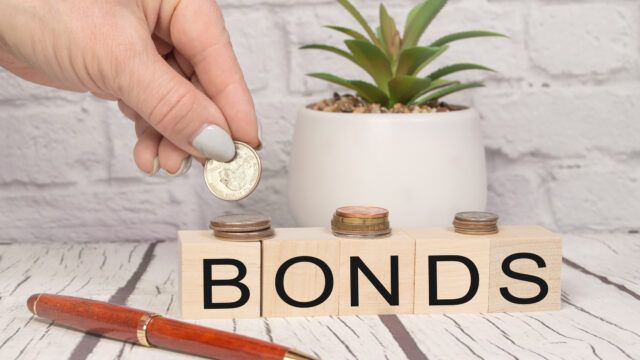There’s been no shortage of asset allocators suggesting that ‘bonds are back’. After a dismal year in 2022, where investment grade corporate bonds saw double-digit falls, investors have rediscovered enthusiasm for the asset class. Fund flow tracker EPFR reports that $19bn has moved into investment grade corporate bond funds since the start of 2023.
The lure has been higher yields. The yield available from an A-rated US investment grade bond jumped from 2.1% at the start of 2022, to 5.4% by September. This has subsequently fallen back to 4.9%, but remains at its highest level since October 2009.
However, it is possible that investors have already missed the boat. The Financial Times reports that Goldman Sachs has already turned bearish on investment grade corporate bonds, saying the easy money has been made and returns will be tougher from here. In its Q1 Fixed Income Outlook, the group said it prefers high yield bonds, where investors are better-compensated for risks.
Less protection
Certainly, there are a number of reasons for caution. CJ Cowan, income portfolio manager at Quilter Investors, says that despite spreads widening in 2022, they are not cheap (or wide) by historical standards. He says: “Both US and Euro spreads are in line with their 10-year average. Meanwhile, even as economic survey data continued to worsen through the second half of 2022, those credit spreads tightened. This could quickly reverse if economic conditions deteriorate.”
For US investment grade credit, spreads have dropped from 1.7% at the end of October 2022, to 1.2% today. This is the lowest level since April 2022, though still higher than it was for much of 2022. This spread narrowing reflects greater optimism about the outlook for the global economy as the risk of a hard landing has fallen. However, it leaves investors with less protection should the economic outlook worsen.
Default rates are still expected to rise in the year ahead. S&P Global Ratings says: “We expect pressures on credit ratings to intensify, as corporate borrowers find it more difficult to pass through high input costs to consumers struggling with rising prices and a mild recession in some of the world’s largest economies.”
That said, this is a far greater problem for high yield than investment grade. S&P forecasts that speculative-grade corporate default rates in the US and Europe will double. There are already signs of an increase. Fitch Ratings reported that the 12-month trailing default rate has risen to 1.5% for US high-yield debt, the highest level since early in the pandemic. It expects this to reach over 3% by the end of the year.
However, investment grade issuers have less leverage and are therefore less exposed to higher borrowing costs. They are also likely to have more robust business models, and be less vulnerable amid a weaker economic environment. Equally, S&P adds: “Many borrowers built up enough buffers during the long stretch of favorable financing conditions to ride out a rough patch—at least for some time—supporting credit quality in many sectors.”
Cowan agrees: “Corporate balance sheets are healthier than when going into previous economic downturns and corporate bond issuers did a good job of extending the maturity of their debt during the recent period of very low rates. While fundamental credit metrics will surely worsen in the coming year as rate hikes slow demand, few are predicting a sudden spike in defaults.”
Recipe for risk
For investment grade bonds, a greater problem may be a surprise on the direction of interest rates. There has already been weakness in investment bond pricing in recent weeks as markets have reinterpreted Federal Reserve comments. The S&P UK Investment grade corporate bond index peaked on 2 February at 350 and has been steadily falling since – now at 339.5. However, for context, it was 330 at the start of the year.
Olivier Candrian, senior portfolio manager, Reyl Intesa SanPaolo, says the experience in UK bond markets during the ‘Trussonomics’ debacle should remind investors of some of the risks in the investment grade corporate bond market: “[The] detonator consisted of a good dose of inflation (penalising purchasing power), a dash of current account deficit (weakening sterling) and was then shaken up with the public deficit (reducing the solvency of the national debt, which now stands at 100% of GDP). The result? The sharpest rise in long-term government bond yields on record, with the 30-year government bond yield rising from 1% in December 2021 to almost 5% at the height of the crisis at the end of September 2022.”
Investment grade bonds have more exposure to problems in the government bond market. It is worth noting, as a result, high yield and emerging market debt were more stable in 2022 than investment grade. While 2022 looks like it was an exceptional year, volatile government bond markets still pose a threat.
Candrian believes the market is still attractive enough to support a barbell positioning, but is favouring shorter-term investment grade bonds, in anticipation of an economic slowdown and a rise in the credit risk premium. He says yields are still appealing even after their recent falls. Cowan also favours shorter-dated debt with less interest rate exposure in this environment.
Just as investors should be cautious on any crowded trade, they should have reservations about investment grade corporate bonds. While yields look high and the inflation environment more settled, there are still risks in the year ahead. Credit analysis will be vitally important.
This story first appeared on our sister publication, Portfolio Adviser.

















